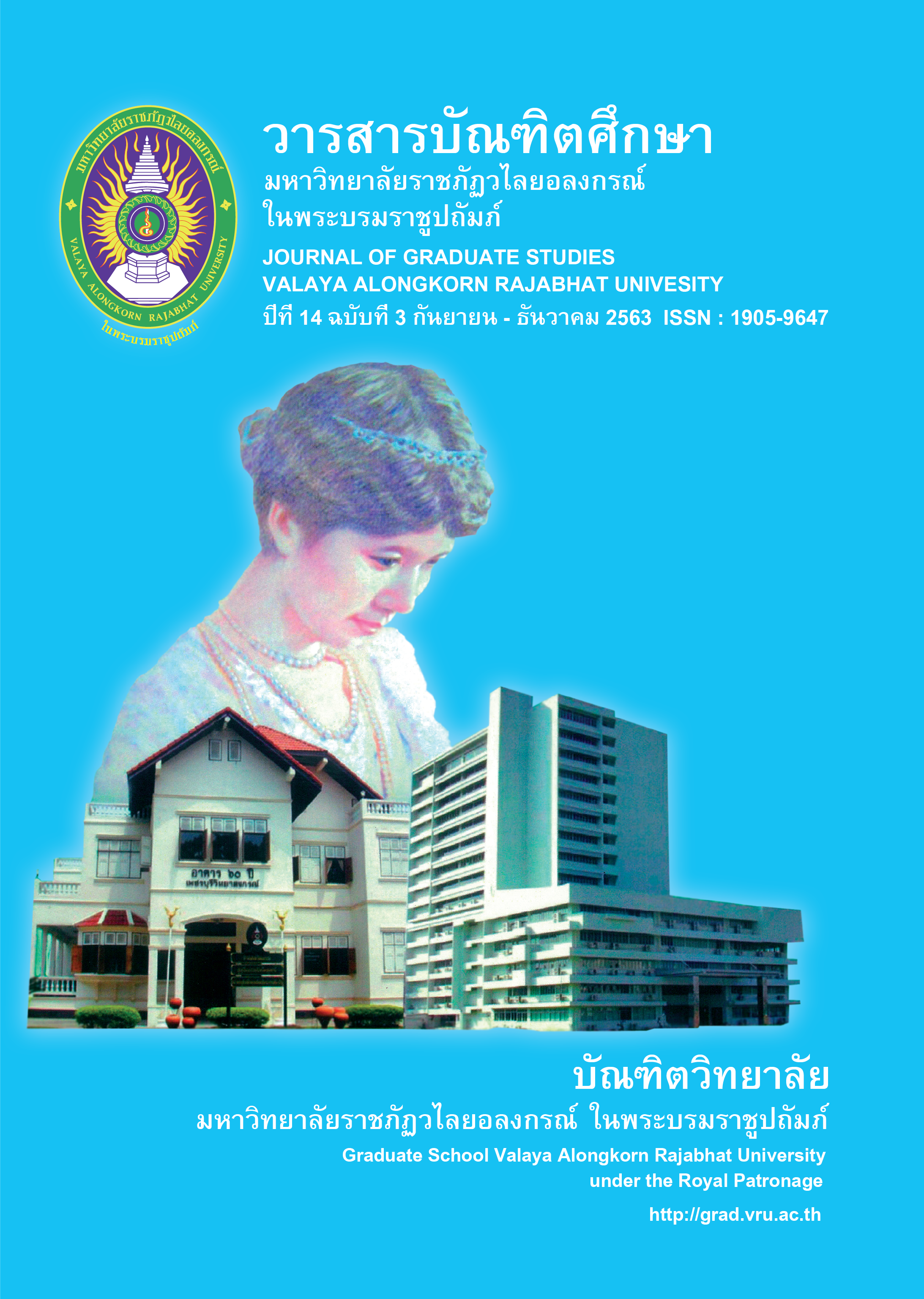INHERITANCE PROCESS OF LI-KE KHMER FOLK ART PERFORMANCE SURIN PROVINCE
Main Article Content
Abstract
The objectives of this research were 1) to study the current state of Li-Ke Khmer folk art performance Surin Province. 2) To study the composition of Li-Ke Khmer folk art performance Surin Province. And 3) to study Inheritance process of Li-Ke Khmer folk art performance Surin Province. The sample group 200 people. Include, key informants, practitioners, general informants. Which obtained by purposive sampling. Data collection with a preliminary basic survey, interview, and observation. Check informantion then presenting the research results descriptive analysis.
The research found that 1) Current state of Li-Ke Khmer folk art performance Surin Province. There is a Li-ke Khmer group performing traditional performances which is almost all gone only 2 groups left name Coketombantheinsilp and Seksunthomsilp. Currently, the number of actors has decreased. In addition, the popularity of the people also decreased. The acting style has been changed by imitating the performance of the central Li-Ke. 2) Composition of Li-Ke Khmer folk art perfomances Surin Province. Found that. The actors dress easily in daily life. Wearing a neck straps with beads hanging in a strand. Head ornaments resemble to Therid and decorated with flowers. Dance is a simple dance. Not popular to move to other places. Sing and negotiate yourself. Musical instruments include Seo Wu, Bagpipes In, Tambourine drum, Drum stand, and Cymbals. The scene is a picture throne room. The stage will raise the stage from the ground about 1 meter high. 3) Inheritance process of Li-Ke Khmer folk art performance Surin Province. Found that. Interited by method. Packing content the Li-ke Khmer in higher education course. Organnize local Li-ke Khmer training. Make a book about the Li-ke Khmer. Bring knowledge to songs that are creative as a performance set called “Reum Li-ke Khmer” Prepared into a video disc. Public relation on television and radio. Considered as inheritance process of Li-Ke Khmer folk art performance Surin Province.
Article Details

This work is licensed under a Creative Commons Attribution-NonCommercial-NoDerivatives 4.0 International License.
บทความทุกเรื่องได้รับการตรวจความถูกต้องทางวิชาการโดยผู้ทรงคุณวุฒิ ทรรศนะและข้อคิดเห็นในบทความ Journal of Global of Perspectives in Humanities and Social Sciences (J-GPHSS) มิใช่เป็นทรรศนะและความคิดของผู้จัดทำจึงมิใช่ความรับผิดชอบของบัณฑิตวิทยาลัย มหาวิทยาลัยราชภัฏวไลยอลงกรณ์ ในพระบรมราชูปถัมภ์ กองบรรณาธิการไม่สงวนสิทธิ์การคัดลอก แต่ให้อ้างอิงแหล่งที่มา
References
Kestes, B. (1993). watthanatham phaophan manut [Culture of Human Race]. Ubon Ratchathani: Yongsawat Printing.
Pongpit, S. (2020). phūmpanyā chāobān kap kānphatthanā chumchon. lem nưng, sō̜ng [Local Wisdom and Community Development (Vol. 1 and 2)]. Bangkok: Wisdom Foundation and Village Foundation.
Pongsapitch, A. (1997). sangkhom læ watthanatham (phim khrang thī hok) [Society and Culture (6th ed.)]. Bangkok: Chulalongkorn University Press.
Royal Academy. (2013). photčhanānukrom chabap banthittayasathān Phō̜.Sō̜. sō̜ngphanhārō̜ihāsipsī (phim khrang thī sō̜ng) [Royal Institute Dictionary (2nd ed.)]. Bangkok: Nanmee Books Publications.
Saihoo, P. (1988). nǣothāng kān songsœ̄m læ phœ̄iphrǣ watthanatham phư̄nbān Thai [The Methods for Promoting and Distributing Thai Local Culture]. Bangkok: Teachers’ Council of Thailand Printing, Ladprao.
Samakkan, S. (1982). withīkān sưksā sangkhom manut kap tūa bǣp samrap sưksā sangkhom Thai [The Study of Human Society and A Model for Studying Thai Society]. Bangkok: National Institute of Development Administration.
Santasombat, Y. (1997). manut kap watthanatham (phim khrang thī sām) [Human and Culture (3rd ed.)]. Bangkok: Thammasat University Press.
Tungchareon, W. (2009). suntharīyasāt phư̄a chīwit (phim khrang thī sō̜ng) [Aesthetics for Life (2nd ed.)]. Bangkok: E and IQ Publisher.
Wannasiri, P., N. (1997). mānutsayawitthayā sangkhom læ watthanatham [Social Anthropology and Culture]. Bangkok: Thammasat University Press.


